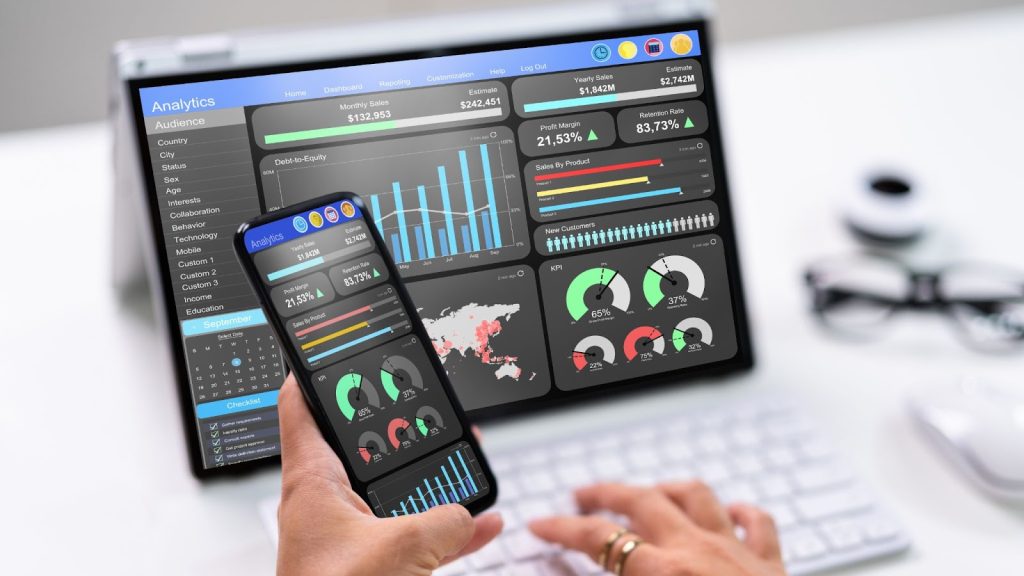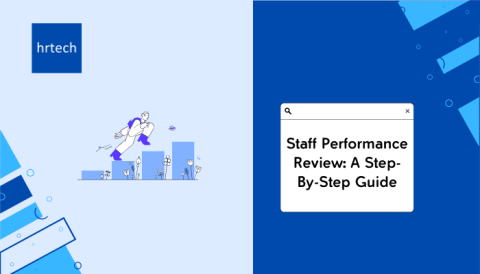Employee evaluations are a key component of performance management, helping businesses identify high performers, address skill gaps, and align workforce output with organizational goals. In the absence of measurable benchmarks, evaluations risk becoming inconsistent and disconnected from actual outcomes.
Integrating key performance indicators for employees into the evaluation process enables objective tracking of results, supports fair decision-making, and promotes continuous improvement.
This blog explains how KPIs function in employee assessment, with practical strategies, industry examples, and implementation guidelines.
Key Takeaways
- KPIs bring consistency to employee evaluations by replacing subjective opinions with measurable, role-specific performance metrics.
- Quantity, quality, efficiency, and strategic alignment are the four core KPI types used across various functions.
- Real-world examples like error rates, sales conversions, and task completion rates help track employee contributions accurately.
- Best practices include quarterly reviews, weighted scoring, dashboards, and peer input for balanced performance evaluation.
- Implementing a KPI framework requires the right tools, regular updates, and feedback loops for continuous improvement and clarity.
The Importance Of Using Key Performance Indicators For Employees

Structured metrics shift performance reviews from subjectivity to consistency across teams. Without KPIs, expectations remain unclear and accountability weak. Below are key benefits of using KPIs in performance evaluation:
- Turnover Rate Analysis: Tracks exits by role, tenure, and department, commonly used in manufacturing and tech-support environments for workforce planning.
- Expectation Setting and Role Clarity: KPI scorecards in TeamLease tools help standardize performance language across operations and support teams.
- Performance Benchmarking: Enables cross-functional comparisons using normalized KPIs within TeamLease platforms during internal reviews and advisory audits.
- Linkage Between Output and Rewards: Performance dashboards integrate with payroll to ensure incentive allocation aligns with KPI results.
Partner with TeamLease to unlock workforce potential through KPI-based insights that support growth and retention strategies.
Let’s explore the key types of KPIs that help evaluate employee performance across different roles and functions.
Types Of KPIs for Employee Performance

Different roles need distinct KPIs, but all must align with company goals. The right KPI type ensures relevant, outcome-driven assessments. Structured KPI categories help boost team focus, productivity, and transparency.
Below are four essential types of KPIs.
Quantity-Based Metrics
- Project Completion Rate: Measures the number of completed tasks or projects in a given timeframe, standard in tech and operations roles.
- Sales Volume: Tracks units sold per employee, used heavily in retail, manufacturing, and B2B sales teams.
- Calls or Tickets Handled: Tracks client interactions daily, a key metric in customer service and IT support roles.
- Lead Generation Count: Tracks marketing-generated leads by campaign, critical for digital marketing and sales development functions.
Quality-Based Metrics
- Error Rate: Monitors mistakes in output, critical for manufacturing, coding, and financial reporting roles.
- Customer Satisfaction Score (CSAT): Gauges service quality through surveys, often used in retail and tech support.
- Audit Pass Rate: Tracks compliance with standards in regulated sectors like healthcare, banking, or logistics.
- Review Ratings: Uses external or internal reviews to assess employee deliverables, seen in content, design, or consultancy work.
Efficiency-Based Metrics
- Turnaround Time: Measures the time taken to complete tasks, key in logistics, tech, and consulting projects.
- Utilization Rate: Tracks billable hours vs. total hours, often used in consulting, engineering, and creative roles.
- Response Time: Measures how quickly an employee responds to issues, relevant for support and operational roles.
- Automation Contribution: Evaluates efficiency gains from automation initiatives, especially in IT and process-heavy roles.
Strategic Alignment Metrics
- Goal Alignment Score: Assesses how well employee objectives align with business strategy, reviewed quarterly.
- Innovation Index: Measures contributions to new ideas or solutions, often used in R&D, product, and tech teams.
- Learning Milestone Completion: Tracks progress in upskilling programs, supported through TeamLease Digital’s blended learning solutions.
- Cross-Functional Collaboration: Evaluates teamwork across departments, used to build agile, transformation-focused cultures.
Rely on TeamLease to streamline performance reviews with automated tools designed for consistency across functions.
Let’s look at some practical examples of effective key performance indicators for employees across various industries and roles.
Examples Of Effective Key Performance Indicators For Employees

Effective KPIs reflect role-specific duties and align with company goals. Structured metrics help drive consistent performance outcomes and accountability. Organizations using tools from TeamLease often integrate such KPIs into workforce tracking and reporting systems.
Here are five practical examples of performance indicators used across industries:
- Task Completion Rate: Tracks assignments finished on time, commonly applied in IT, logistics, and administrative functions.
- Error Rate Tracking: Measures accuracy of output, critical for data entry, finance, and production-based roles.
- Sales Conversion Ratio: Calculates lead-to-sale success, widely used in retail, insurance, and B2B sectors.
- Customer Resolution Time: Monitors issue resolution speed, essential in service desks, telecom, and tech support.
- Upskilling Participation: Evaluates learning engagement via TeamLease LMS tools, relevant for evolving technical roles.
Let’s explore how to set relevant KPIs for employees that align with both individual roles and overall business objectives.
How To Set Relevant KPIs For Employees

Setting the right performance indicators ensures employees are measured on what matters most to their role and the company. Without role-relevant KPIs, evaluation loses accuracy, which can lead to disengagement and misalignment with goals.
Below are key methods organizations use to create meaningful and measurable KPIs.
Tie KPIs to Business Strategy
- Strategic Objective Mapping: Aligns individual targets with quarterly or annual business goals to ensure impact at scale.
- Department Goal Integration: Breaks down strategic plans into measurable team KPIs, used in sectors like consulting and finance.
Make KPIs Role-Specific
- Job Function Analysis: Tailors metrics to each job description using templates in TeamLease HR platforms.
- Output-Based Design: Sets KPIs based on deliverables, commonly applied in creative and technical project teams.
Let’s look at key best practices that ensure fair, consistent, and impactful evaluation of employees using KPIs.
Best Practices For Evaluating Employees Using KPIs

Accurate evaluation with KPIs depends on consistent processes and clearly defined expectations. When appropriately applied, KPIs support fairness and performance clarity. TeamLease integrates KPI tracking with workforce analytics to promote evidence-based reviews.
Below are tested practices used across industries to strengthen KPI-based performance evaluations:
- Quarterly Review Cadence: Reviews held every quarter ensure metrics stay aligned with shifting priorities in fast-paced service environments.
- Weighted Scoring Models: Assigns different values to KPIs based on role impact, widely used in sales, logistics, and operations teams.
- Calibration Sessions: Teams at TeamLease run cross-functional reviews to ensure consistent KPI application across departments and roles.
- Real-Time Dashboards: Visual performance dashboards help supervisors provide immediate feedback, especially in high-volume support roles.
- Peer and Self-Assessment: Used to supplement KPI data with behavioral insights, common in creative and collaborative environments.
Choose TeamLease to build role-specific KPIs that align employee performance with your strategic business objectives.
Let’s explore how to implement a KPI framework that drives clarity, consistency, and measurable employee performance.
How To Implement A KPI Framework In Your Organization

A KPI framework standardizes employee evaluation and enhances performance visibility across departments. It strengthens accountability and alignment with business goals. TeamLease uses integrated systems to deploy KPIs efficiently across various roles.
Below are key components for building a scalable, effective KPI structure within your organization.
Select The Right Tools
- Real-Time Dashboards: Allow supervisors to monitor progress by team, individual, or function with up-to-date metrics.
- Role-Based Views: Support tailored KPI tracking, which is essential for functions like sales, operations, and customer service.
- Automated Alerts: Notify managers when targets are missed or exceeded, improving response times across teams.
- Centralized Reporting: Consolidates performance data for organization-wide visibility and leadership decisions.
- Integration Capabilities: Links with payroll, attendance, and productivity tools to streamline performance evaluation.
Continuously Review And Improve KPIs
- Quarterly KPI Reviews: Adjust outdated metrics to reflect changing roles or project requirements.
- Employee Feedback Loops: Include feedback from staff during revisions to improve engagement and practical relevance.
- Cross-Functional Analysis: Compare performance trends across departments to identify gaps and refine shared metrics.
- Performance Trend Tracking: Detect shifts in results early and revise KPIs to maintain realistic targets.
- Compliance and Standards Check: Ensure all KPIs align with legal, operational, and organizational policies during reviews.
Conclusion
Key performance indicators for employees play a critical role in creating a results-driven, transparent, and accountable workplace. When KPIs are well-defined and aligned with business goals, they support better decision-making across performance, productivity, and workforce planning.
If your organization aims to streamline employee evaluation, TeamLease can be your trusted partner. With expertise in workforce management and performance tracking, TeamLease enables the implementation of KPI frameworks tailored to your operational and industry needs.
Working with proven providers like TeamLease ensures consistent execution, industry relevance, and compliance, helping businesses maximize employee potential and business performance.
FAQs
1. What is a KPI in employee evaluation?
A key performance indicator for employees is a measurable metric that reflects role output and goals. It quantifies performance in areas like productivity, quality, collaboration, and learning.
2. How often should KPIs be reviewed?
KPIs should be evaluated regularly, ideally quarterly or monthly, depending on role dynamics and project cadence. Frequent reviews keep metrics relevant, enable timely adjustments, and maintain engagement.
3. How to get employee buy-in for KPIs?
Involve employees during KPI definition sessions to increase clarity and ownership. When staff help shape indicators, alignment and engagement in the process improve.
4. Should KPIs include behavioral metrics?
Yes, combining numeric and behavioral metrics creates a holistic evaluation framework.
For example, mix error rates with peer feedback to capture performance and conduct.
5. Can KPIs reduce evaluation bias?
KPIs reduce subjectivity by relying on data rather than perception or memory. Using structured dashboards and standardized templates helps ensure fair reviews across teams.







